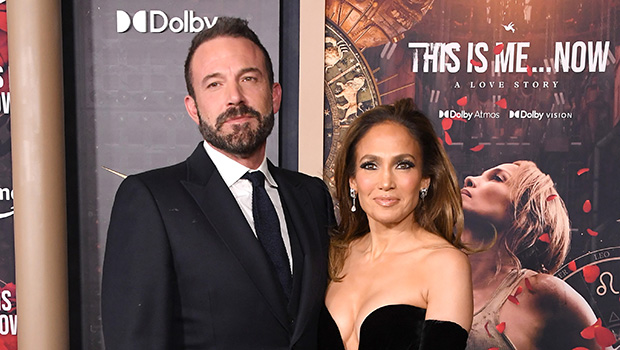There’s something Aristotle said in his Poetics about the effective use of metaphor. Boiling it down, he observed that while coming up with metaphors takes genius, overstuffing your story with beautiful — but confusing — symbols doesn’t leave you with a timeless piece of art. Instead, you end up with “nothing but riddles or gibberish.”
Apparently, no one told Hayao Miyazaki.
Even more than his earlier movies, the Studio Ghibli founder’s newest — and once again, after feigning retirement a decade ago, head-fake “last” — is a lesson in puzzling weirdness, stemming from virtually every aspect of its making.
That movie, The Boy and the Heron, is a moralistic fable six years in the making, inspired by a once-banned book — but telling a completely different story. Meanwhile, the book in question was a somewhat accidentally written textbook by a former political prisoner, made in order to teach Japanese school kids about friendship, Napoleon and deontological humanism.
WATCH | The Boy and the Heron trailer:
And there is so much going in this story it is easy to get lost — even as, on the surface, it follows the typical-Ghibli theme of coming-of-age self-discovery, all wrapped up in a fantasy-coded package.
But despite everything working against it, Miyazaki may just have beaten Aristotle. Because as indecipherable as it may seem, there is a beautiful logic working under the surface.
Isekai for his grandson
Here we follow 12-year-old Mahito Maki as he and his father move to countryside following his mother’s death. Though this is set in 1943 Japan, war is mostly on the outskirts of our story. Instead, we focus on Mahito’s polite, but standoffish, relationship with his father’s new wife (his late mother’s younger sister) and a roving band of maids working in his new home.
That is, until the roughest-voiced movie bird since Iago comes to invite him into a nearby tower; a tower giving off just about as much warm and welcoming vibes as The Shining’s Overlook Hotel.
What follows is a Through the Looking-Glass type tale as Mahito is transported to a fantastical land where his sense of duty to others, and his relationship with his mother, is probed and often outright challenged. Its a formula seemingly plucked right out of Over the Garden Wall (itself inspired by Ghibli’s first box office smash Spirited Away), but actually right at home in Japan’s “Isekai” genre.
Though that genre is defined by characters being dropped into fantasy worlds as a vehicle for introspection, The Boy and the Heron pushes the envelope on how much hinted-at meaning you can throw at westerners before they fall asleep.
We get an army of human-sized, man-eating budgies, following a sword-wielding king into an ill-explained war. We see flying “warawara” (picture a marshmallow with legs) flying up to be born Soul-style, only to be picked off by talking pelicans and a superpowered little girl. At one point, we get a backstory of the tower which involves the Meiji Revolution, at least a couple of ghosts and a magic meteoroid.
But as esoteric as it sounds, it all has meaning. Like Cormac McCarthy’s The Road was made for a son he had nearly in his 70s, Miyazaki made The Boy and the Heron for his grandson. And similarly, his intent was to leave a message about life to a child whose own life he would largely miss. And while McCarthy’s post-apocalyptic novel (about the meaning of bringing life into a world you’re watching die) took a decidedly pessimistic view, Miyazaki goes the opposite way.

How Do You Live?
The story of The Boy and the Heron is inspired by the Japanese classic novel How Do You Live?, but they don’t tell the same story; the book follows 15-year-old “Copper” (nicknamed after Copernicus) in the wake of his father’s death.
In a series of vignettes, he questions whether a classmate is a lesser person because he lives in poverty, experiences how to be a good friend in difficult situations and wonders what makes a person great. At the same time, his questions are answered in philosophical essays from his uncle; a Zen and the Art of Motorcycle Maintenance format that works more as an instructional booklet on life than a narrative.
Released in the same year it is set — 1937’s pre-war Japan — How Do You Live? was written by philosopher and committed socialist Genzaburō Yoshino. During that decade’s increasingly imperialistic and suppressive regime, Yoshino was first imprisoned for 18 months for socialist leanings, then asked to write an ethics textbook for children.

Knowing children would be bored by straightforward lessons — and that Japan’s thought police would clamp down on a book telling young people to celebrate individuality and freedom of thought — Yoshino wrote it as a story instead.
The result was supposedly Miyazaki’s favourite childhood book. And in adapting it for his grandson, he made the lessons his own.
He added personal fascinations, like making Mohito’s father a designer of fighter planes — a common theme in his movies like The Wind Rises and Porco Rosso and the same job as his own father, while Studio Ghibli was named after an Italian plane. Similarly, the dead parent was shifted to the mother (whom Miyazaki was closer to than his father, and who suffered from tuberculosis during his childhood like the mother in My Neighbour Totoro) while the book itself shows up as an influential work for the protagonist.
But he also included his own findings on life, hidden behind all the metaphors. In moving the date from pre-war to wartime Japan, Miyazaki infuses the story with his own conflicted upbringing; born in 1941, he once wrote “my first memories are of bombed-out cities.” And as we learn the tower’s hidden world is an escape created by a now isolationist great uncle, Mahito is offered the chance to stay in a beautiful refuge from the inhumanities of the real world.
That is the message Miyazaki took from How Do You Live?, living through a war and his own long career — and the one he means to give his grandson.
In How Do You Live?, Copper’s uncle tells him that being polite is not enough to be a good person. Like Mahito, Copper is strictly deferential and outwardly good — but both mean to teach that is not enough. What matters is, even in the face of one’s own errors and ugly realities of the world, you must care about people, engage with the world and do what you can to make it better.
“There is nothing more beautiful than people nurturing goodwill toward their fellow beings,” reads the book. “And those are the human relations that humans truly deserve. Copper, don’t you agree?”







